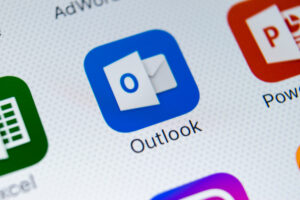The industry-specific cloud service was announced at Build 2020 and combines functionality from Microsoft 365, Dynamics, Power Platform, and Azure.
Microsoft’s chatbot projects with hospitals in the early days of the coronavirus epidemic was just the beginning of an expansion of its software development tools for healthcare providers. The company announced Tuesday during the Microsoft Build 2020 developer event that hospitals and physician practices will have all the Microsoft tools in one place with the launch of Microsoft Cloud for Healthcare.
According to the company, the service brings together capabilities from Microsoft 365, Dynamics, Power Platform, and Azure. It uses a common data model (CDM) to enable sharing of data across applications and access to data analytics. This solution will integrate the Microsoft Cloud with an industry-specific data model, cross-cloud connectors, workflows, and APIs to provide industry solutions aligned to priority scenarios, Microsoft said.
“It builds on existing capabilities across our cloud offering such as a new bookings app in Teams, which enables you to schedule, manage, and conduct business-to-consumer virtual appointments,” said Frank Shaw, corporate vice president for communication at Microsoft, in a video statement.
According to the announcement, the new feature allows organizations to manage multiple departments and staff in a single scheduling tool. They can schedule virtual appointments with internal and external attendees for healthcare virtual visits, job interviews, and customer service appointments.
Microsoft has been a strong player in the healthcare market for some time and has positioned itself as a partner, not a competitor.
Forrester senior analyst Jeff Becker said that Microsoft has been working to bring differentiated cloud offerings to the enterprise healthcare market for some time.
“Healthcare organizations are increasingly comfortable pursuing cloud-enabled digital transformation initiatives, and Microsoft is capturing a large share of this emerging business,” he said.
Tom McGuinness joined the company as a corporate vice president for the healthcare division in April after leading GE Healthcare’s imaging business. A 2017 Forrester report listed Salesforce, Kinvey, IBM, CloudMine, and Microsoft leading the market in cloud vendors in the healthcare space.
In 2019, Cerner, one of the biggest electronic health record companies, announced AWS as its exclusive web services provider for AI and analytics projects. Cerner’s digital transformation strategy is to expand beyond EHR platforms to offer more data analytics services.
In January, the other EHR market leader, Epic Systems, announced an end to integrations with Google Cloud in favor of working with Amazon Web Services and Azure.
Healthcare providers have used Teams to conduct 34 million meetings including virtual visits during the past four weeks, according to Microsoft Health systems including St. Luke’s University Health Network, Stony Brook Medicine, Confluent Health, and Calderdale and Huddersfield NHS Foundation Trust use Teams for video visits.
In addition, with the Microsoft Graph API, organizations can incorporate virtual visits into their workflows. The API supports the integration of both scheduling and meeting- join links into existing applications, such as electronic health records systems in healthcare.
SEE: Multicloud: A cheat sheet (free PDF)
The new service offers automation for workflows as well as deep data analysis capabilities for both structured and unstructured data. This solution also improves end-to-end security compliance and accessibility of data, driving better operational outcomes, according to a statement from the company.
The public preview begins on May 19, with general availability to begin in the fourth quarter of the 2020 calendar year. Healthcare will be the first industry served with additional industry-specific clouds to follow.
In other Build news, Microsoft’s Tech for Social Impact team will launch X4Impact in collaboration with Giving Tech Labs. This online innovation hub will use Azure to create and scale technology for the public interest. The goal of X4Impact is to establish a trusted online exchange where nonprofits, startups, and foundations can work together to create address challenges such as COVID-19, access to jobs, and remote healthcare.
Improving data interoperability with FHIR
Microsoft is also launching the open-source Fast Healthcare Interoperability Resources (FHIR) server available now for Azure Stack Hub and Azure Stack Edge. This will allow Microsoft customers to connect existing data sources such as electronic health record systems or research databases at the edge while addressing compliance and regulatory requirements.This standard created by the Health Level Seven International organization describes data formats and elements and an application programming interface for exchanging electronic health records.
The Chicago Dept of Public Health and Rush Hospitals stood up an instance of Azure API for FHIR for end-to-end clinical, lab and capacity data analysis in seven days to cope with the COVID crisis. Using the CCDA converter and Power BI, they were able to ingest data in different formats, convert it to FHIR, and add visualizations and downstream analytics to connect data across multiple hospitals.
Developers building e-commerce, IoT, internet security, and patient-facing healthcare apps with Azure Cosmos DB can use this new functionality to:
- Bring their own keys for enhanced end-to-end encryption of data
- Recover data from a specific period and restore at any time with point-in-time backup and restore
- Access Version 4 of Azure Cosmos DB’s Java SDK
- Use new delete functionality in Azure Cosmos DB change feed
Also see
Source of Article




